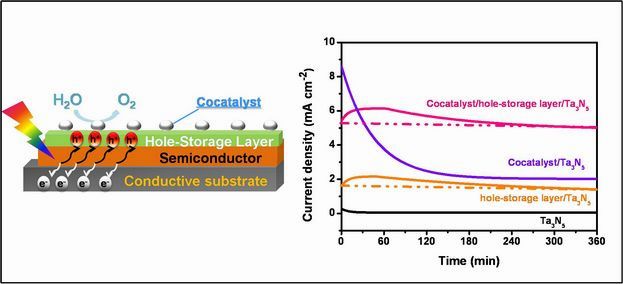Photoelectrochemical (PEC) water splitting is an ideal approach for renewable solar fuel production. However, trade-offs between light-harvesting andphotochemical stabilityof photoelectrodes have greatly limited the development of solar water splitting technology.Tantalum nitride (Ta3N5) has a theoretical solar to hydrogen conversion efficiency of 15.9%, but it is not stable in the highly oxidative environment of water oxidation.
The DICP & DNL research team led by Prof. LI Can has recently designed and achieved a hole-storage layer modified tantalum nitride photoanode system for highly stable solar water splitting. Their results were recently published as a communication in Angew. Chem. Int. Ed. (DOI:10.1002/anie.201404697).
The team demonstrated that photoelectrochemical water oxidation on a ferrihydrite layer modified tantalum nitride photoanode can be sustained for several hours, which is the most durable tantalum nitride based electrode reported to date. The role of ferrihydrite was investigated as a hole-storage layer, increasing the hole-storage capacity and suppressing photocorrosion of tantalum nitride electrode. These findings provide a new avenue for developing efficient and stable solar water splitting devices.
This work was supported by the National Natural Science Foundation of China and the Ministry of Science and Technology of China. (By LIU Guiji & SHI Jingying)

Contact: Prof. LI Can
Email: canli@dicp.ac.cn